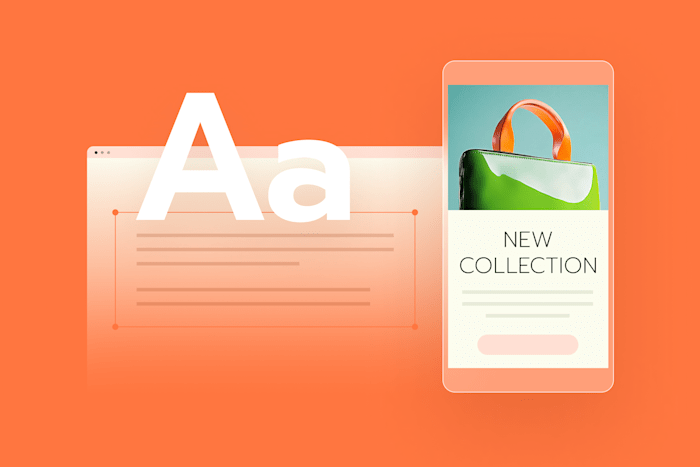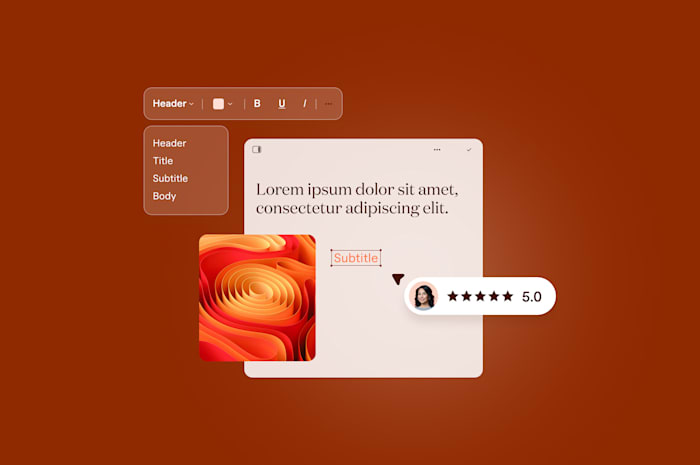11 Types of Copywriting: When To Use and Services
Explore the essential copywriting styles every business needs for marketing success.
 May 27, 2025
May 27, 2025 10 minute reading
10 minute reading
Copywriting is everywhere—from the ads you see online to the product descriptions that convince you to click “buy.” It’s what makes brands stand out, build trust, and drive sales.
But not all copywriting is the same. Some types focus on selling, while others inform, entertain, or engage audiences in different ways.
Understanding the ins and outs of copywriting helps you capture the attention of your audience and, hopefully, convince them to become lifelong customers.
In this article, we’ll cover the main types of copywriting, when to use them, and what makes them unique.
1. Direct response copywriting
Direct response copywriting is designed to get an immediate reaction from the reader, such as making a purchase, signing up for a newsletter, or clicking a link. It often appears in ads, sales pages, and emails, using persuasive language and clear calls to action to drive results.
Unlike brand copywriting, which builds long-term awareness, direct response copywriting focuses on urgency, making the message compelling enough for the reader to act on the spot. It relies on psychological triggers like scarcity, social proof, and personal benefit to overcome hesitation and push the reader toward a decision.
Unique characteristics of direct response copywriting
Immediate action: Encourages the reader to take action right away, such as buying a product or signing up.
Clear call to action: Uses direct language to tell the reader exactly what to do next.
Persuasive tone: Focuses on benefits, urgency, and emotional triggers to drive decisions.
Measurable results: Performance can be tracked through clicks, conversions, and sales.
Personalization: Often speaks directly to the reader’s needs, pain points, or desires.
Tested and optimized: Frequently A/B tested to find the most effective wording and format.
Example of direct response copywriting
One of the best ways to find an example of direct response copywriting is to search for a keyword in Google. The sponsored listings at the top are usually landing pages.
These pages often feature compelling headlines, benefit-driven messaging, and clear calls to action, such as "Get a Free Quote," "Sign Up Now," or "Limited-Time Offer." Clicking on these ads will take you to a page optimized to drive immediate action, making them great real-world examples of direct response copywriting in action.
We searched "virtual photo editors” and one of the first results was from Evoto. You’ll notice when you click on the link that Evoto doesn’t send you to their home page. Instead, they send you to a landing page that is 100% relevant to your search term.
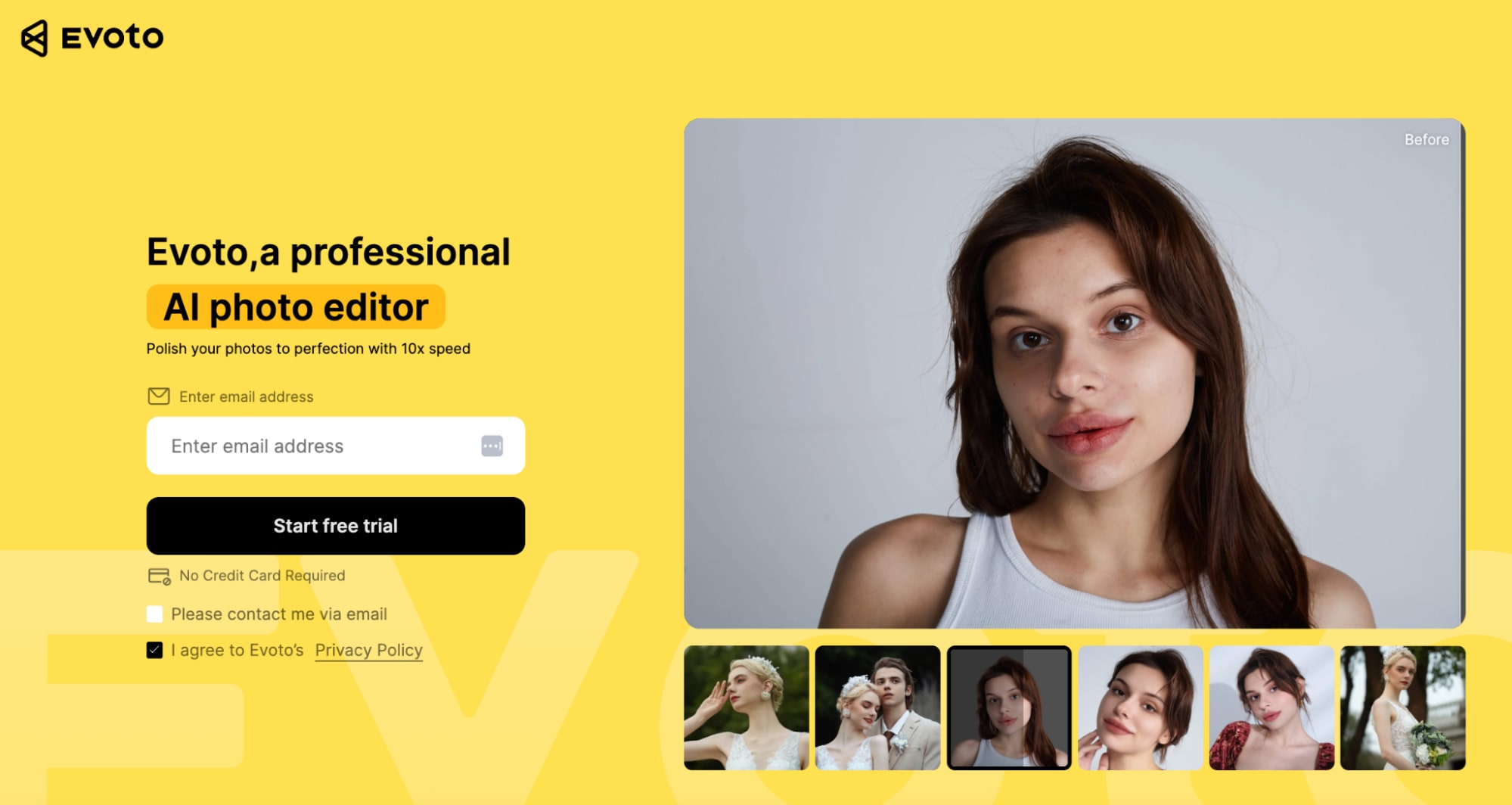
Evoto
In this particular example, Evoto writes direct and persuasive copy. It’s not long—but it’s exactly what the searcher needs to get more information on their tool.
2. SEO copywriting
SEO copywriting is designed to improve a webpage’s visibility in search results while keeping the content valuable and engaging for readers. It blends strategic keyword placement with clear, informative writing to attract organic traffic.
Unlike direct response copywriting, which pushes immediate action, SEO copywriting focuses on long-term discoverability, helping brands rank higher and gain steady website visitors over time.
With the top three organic search results receiving nearly 55% of all clicks, strong SEO copy can make a significant impact on a site's traffic and authority.
Unique characteristics of SEO copywriting
Keyword optimization: Uses relevant search terms naturally to improve rankings without disrupting readability.
Search intent focus: Aligns content with what users are looking for, whether it's informational, transactional, or navigational.
Structured formatting: Includes clear headings, bullet points, and short paragraphs to enhance readability and scannability.
Meta elements: Optimized title tags, meta descriptions, and alt text help search engines understand the content.
Internal linking: Connects related pages to improve navigation and keep users on the site longer.
Long-term visibility: Designed to attract organic traffic over time rather than drive immediate action.
Evergreen potential: Often focuses on timeless topics that continue to bring in visitors long after publishing.
Authority building: Provides well-researched, high-quality content to improve credibility and search rankings.
User experience (UX) friendly: Balances SEO best practices with engaging, readable content that satisfies both search engines and human readers.
Example of SEO copywriting
You can identify SEO copywriting by clicking on the top results in the organic listings of the search engine results page (SERP). These top listings have the best SEO copywriting because they are highly relevant, give useful information, and balance keyword optimization and user intent. And Google rewards this kind of useful content with high rankings.
To give you an example, we searched “virtual photo editor” in Google, and the top organic result was Canva’s photo editor page. This page is designed to rank well in search engines by including relevant keywords, clear headings, and structured content that answers common user questions.
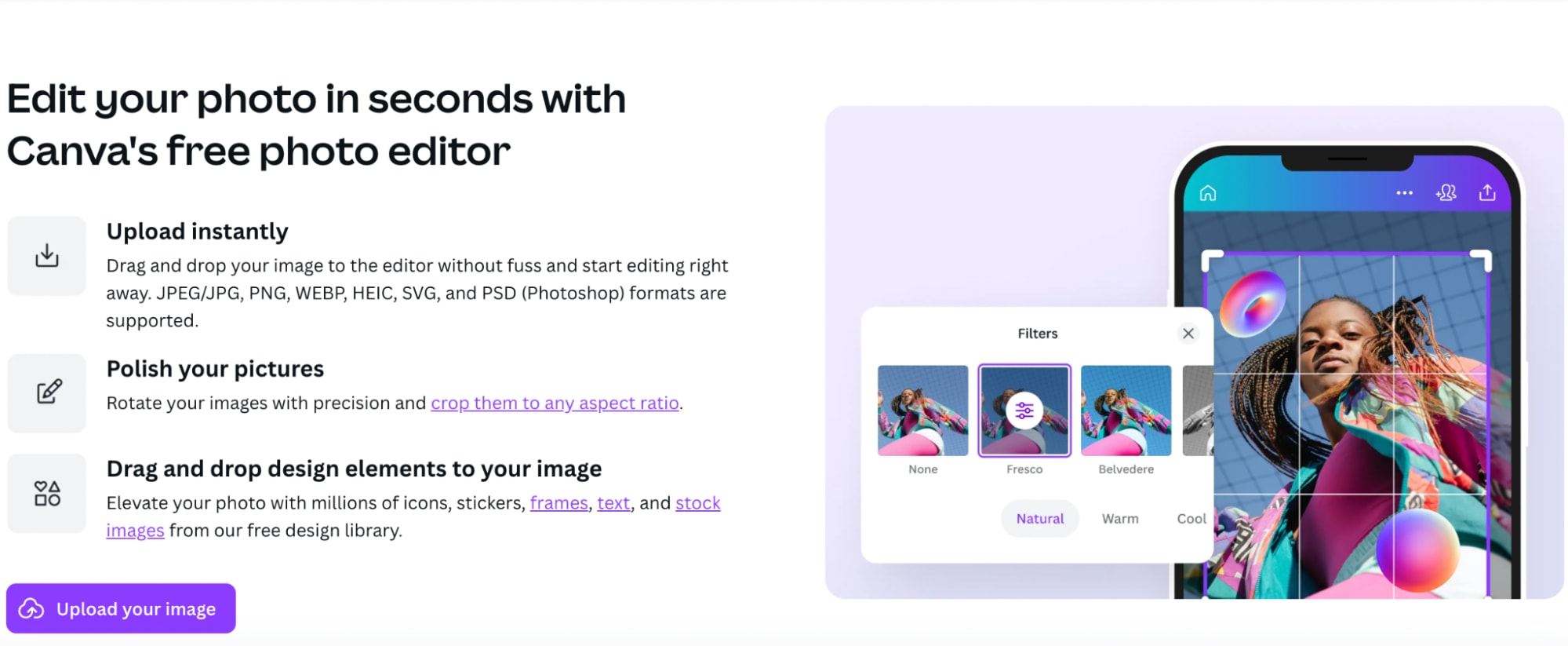
Canva
Canva’s page provides useful and relevant information about its online photo editor, including key features and benefits.
The SEO copywriting and content are structured with short paragraphs, bullet points, and images to improve readability, making it easier for both users and search engines to understand. This SEO content helps Canva attract steady traffic from people searching for online photo editing tools.
3. Social media copywriting
Social media copywriting is the practice of crafting short, compelling messages designed to grab attention, spark engagement, and drive action on platforms like Facebook, Instagram, Twitter, LinkedIn, and TikTok.
Social media copy needs to be concise, visually appealing, and aligned with the fast-paced nature of online feeds. It often includes captions, headlines, ad copy, and call-to-action phrases customized to each platform’s format and audience.
You’ll see social media copywriting in a variety of places, including organic posts, paid advertisements, influencer collaborations, and branded content. It appears in Instagram captions that encourage users to comment, tweet threads that build conversations, LinkedIn posts that showcase industry expertise, and Facebook ads designed to drive website traffic or sales.
Unique characteristics of social media copywriting
Platform-specific formatting: Customized to fit the style, character limits, and audience expectations of each social media platform.
Concise messaging: Gets the point across quickly, often in a single sentence or short paragraph.
Conversational tone: Feels natural and engaging, encouraging interaction rather than sounding overly formal or promotional.
Hashtags and keywords: Uses relevant hashtags and keywords to improve discoverability and reach.
Call-to-action focus: Encourages likes, shares, comments, clicks, or other forms of engagement.
Trending and timely content: Often incorporates pop culture references, trending topics, or viral challenges to stay relevant.
Visual integration: Works alongside images, videos, and GIFs to enhance the impact of the message.
Personal and relatable approach: Uses humor, storytelling, or authenticity to connect with the audience.
Testing and iteration: Often adjusted based on performance metrics like engagement rates, click-through rates, and audience feedback.
Example of social media copywriting
There are tons of different kinds of social media copywriting. For this example, we picked an Instagram ad from Ozlo Sleep.

There are two different types of copy on this ad. The first is the words that appear in the video itself, which are direct and clear. The second is the caption.
You can use both of these places to write copy that connects with your audience and persuades them to convert. If you need help with social media copywriting, you can always hire an expert on Fiverr to help you.
Find a keyword research specialist
4. Brand copywriting
Brand copywriting focuses on shaping a company’s voice, personality, and messaging across different platforms. It helps with building recognition, trust, and emotional connections with an audience. This type of copywriting defines how a brand communicates in everything from website content and social media bios to advertising slogans and mission statements.
You’d use brand copywriting when developing a company’s identity, launching a new product, or maintaining a consistent tone across marketing channels. It’s often focused on branding and storytelling and is essential for businesses that want to stand out, establish credibility, and create lasting relationships with customers.
Unique characteristics of brand copywriting
Consistent voice: Maintains a recognizable tone and personality across all platforms.
Emotional connection: Focuses on values, storytelling, and messaging that resonate with the audience.
Long-term impact: Builds brand recognition and trust rather than driving immediate sales.
Memorable messaging: Uses strong taglines, slogans, and positioning statements that stick with consumers.
Value-driven content: Highlights what the brand stands for, not just what it sells.
Clear differentiation: Establishes what makes the brand unique compared to competitors.
Multi-channel presence: Appears across websites, ads, packaging, social media, and other brand touchpoints.
Customer-focused approach: Speaks directly to the target audience’s needs, desires, and lifestyle.
Timeless appeal: Often avoids trends to create messaging that remains relevant over time.
Example of brand copywriting
One of the most well-known examples of brand copywriting is Apple’s “Think Different” campaign. Launched in 1997, this slogan wasn’t focused on selling a specific product. It was about defining Apple’s identity as a brand that challenges the status quo and inspires creativity.

Wikipedia
The phrase “Think Different” became a core part of Apple’s messaging, reinforcing the company’s commitment to innovation and individuality. It appeared in ads, product launches, and marketing materials, shaping how people perceived Apple for decades.
5. Technical copywriting
Technical copywriting isn’t as interesting as other types of copy, but it’s useful. It explains complex topics in a clear, precise, and structured way.
You’ll see technical copywriting in user manuals, software documentation, product descriptions, white papers, and technical blogs.
Companies use it when they need to educate customers, train employees, or provide in-depth explanations of how something works. Well-written technical content makes information accessible without oversimplifying key details.
Unique characteristics of technical copywriting
Clarity and precision: Presents complex information in a way that is easy to understand without losing accuracy.
Fact-based writing: Focuses on data, specifications, and verifiable details rather than emotions or persuasion.
Industry-specific language: Uses technical terms correctly while making them accessible to the intended audience.
Logical structure: Organizes content in a clear, step-by-step format for easy navigation and reference.
Objective tone: Avoids exaggeration or overly promotional language, prioritizing accuracy and professionalism.
User-focused explanations: Anticipates the reader’s questions and provides straightforward answers.
Diagrams and visuals: Often includes charts, graphs, or images to support written explanations.
Regulatory compliance: Follows industry standards and legal requirements when necessary.
Consistency in terminology: Uses standardized terms throughout to prevent confusion.
Long-term relevance: Content is designed to remain useful over time, often serving as a reference guide.
Example of technical copywriting
Let’s stick with our Apple example to illustrate the difference. When you buy a Mac, the packaging includes a quick start guide and product documentation that explain key features, setup instructions, and safety information in a simple, easy-to-follow format.
Apple’s technical copywriting stands out because it distills complex technology into clear, concise language. Instead of overwhelming users with jargon, it provides step-by-step instructions and visual aids to help them get started quickly.
Find a copywriter for hire
6. Email copywriting
Email copywriting focuses on writing messages that connect with the reader and drive action. Businesses use emails for promotions, newsletters, product updates, and customer engagement.
You’ll see email copywriting in action when a brand sends a flash sale announcement, a personalized discount, or a reminder about an abandoned cart.
Email has famously high return on investment (ROI) rates. So if you have a good list of subscribers and want them to convert, consider hiring a writer from Fiverr to help you craft creative messages or give you proven writing prompts to work with.
Unique characteristics of email copywriting
Strong subject lines: Captures attention in a crowded inbox and encourages the recipient to open the email.
Personalization: Uses the recipient’s name, past purchases, or interests to make the message feel relevant.
Concise messaging: Gets to the point quickly, since most readers skim emails.
Clear call to action: Directs the reader toward a specific next step, such as clicking a link or making a purchase.
Conversational tone: Feels like a direct message rather than a generic mass email.
Sense of urgency: Often includes limited-time offers or deadlines to prompt immediate action.
Mobile-friendly formatting: Optimized for easy reading on smartphones and other devices.
A/B tested content: Subject lines, copy length, and calls to action are tested to improve performance.
Automated sequences: Used in drip campaigns, abandoned cart reminders, and welcome series to guide customers through a journey.
Engagement tracking: Open rates, click-through rates, and conversions help measure effectiveness.
Example of email copywriting
Open your email app and scroll through your inbox. Look for messages from your favorite brands. They might be a flash sale alert, a loyalty reward reminder, or a cart abandonment email nudging you to complete a purchase.
These emails are designed to get your attention fast. The subject line might create urgency (“Last chance: 50% off ends tonight”), while the body keeps it short and focused, leading to a clear call to action like “Shop Now” or “Claim Your Reward.”
Every part of the email is crafted to drive action, whether that means making a purchase, signing up for an event, or simply staying engaged with the brand. These are perfect examples of email copywriting (especially if you ended up making a purchase).
7. Sales copywriting
Sales copywriting is among some of the most difficult types of copy to write. It’s all about persuasion and understanding human psychology. Sales copywriting works in the moment, using strategic messaging to encourage immediate decisions.
You’ll find sales copywriting in product descriptions, landing pages, direct mail, and sales emails. Effective sales copy makes the next step feel effortless, whether that’s clicking “Buy Now,” scheduling a demo, or signing up for a free trial.
Unique characteristics of sales copywriting
Benefit-driven messaging: Focuses on how the product or service improves the customer’s life.
Emotional triggers: Uses urgency, social proof, or fear of missing out to influence decisions.
Clear, direct language: Avoids fluff and gets straight to the point.
Strong call to action: Tells the reader exactly what to do next, like “Buy Now” or “Get Started.”
Persuasive storytelling: Frames the product as the solution to a specific problem.
Objection handling: Anticipates doubts and provides reassurance to remove hesitation.
Conversion-focused structure: Organizes content to guide the reader toward a purchase step by step.
A/B tested copy: Optimized over time to improve response rates and maximize effectiveness.
Example of sales copywriting
One of the most famous examples of sales copywriting comes from John Caples’ legendary ad: “They Laughed When I Sat Down at the Piano… But When I Started to Play!”
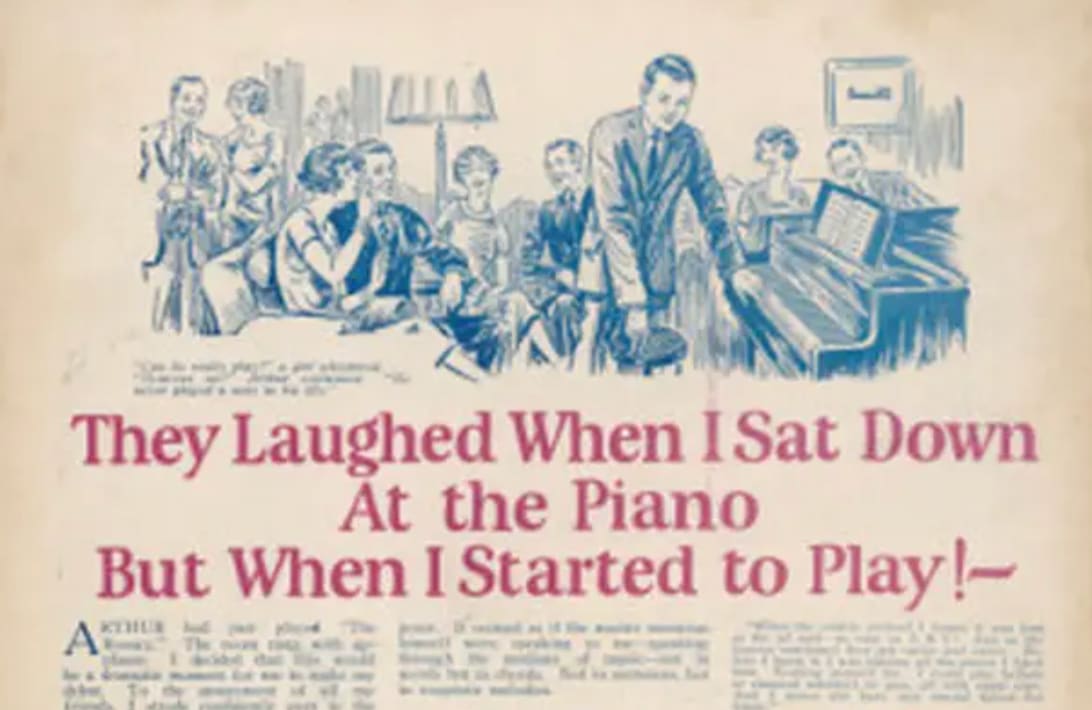
Business Insider
This 1920s advertisement sold piano lessons by tapping into human psychology—curiosity, social validation, and the desire for transformation. The headline draws readers in by setting up a relatable scenario, while the body copy tells a compelling story that builds anticipation and ultimately sells the lesson.
Modern sales copy follows the same principles. Visit Apple’s iPhone product page, and you’ll see persuasive copy that focuses on benefits, not just features. Phrases like “A camera system that redefines what’s possible” and “All-day battery life” make the product feel indispensable, making it easier for customers to justify the purchase.
8. Website copywriting
Website copywriting is the foundation of a brand’s online presence. It includes everything from homepage headlines and product descriptions to about pages and FAQs. Strong website copy clearly communicates what a business offers, why it matters, and how customers can take action—whether that’s making a purchase, signing up, or reaching out for more information.
Getting website copy right is essential because it shapes the first impression visitors have of a business. Confusing, vague, or overly complex writing drives people away. If visitors can’t immediately understand what you do or why they should care, they’ll leave and look elsewhere. Poorly written website copy can also hurt SEO rankings, reduce conversions, and make a company seem untrustworthy. On the other hand, well-crafted website copy keeps visitors engaged, builds credibility, and turns clicks into customers.
Unique characteristics of website copywriting
Clear and direct messaging: Visitors should instantly understand what the business offers and why it matters.
User-focused language: Addresses the needs, problems, and goals of the target audience rather than focusing solely on the company.
Strong headlines: Grabs attention and communicates key benefits within seconds.
SEO optimization: Uses relevant keywords naturally to improve search rankings and attract organic traffic.
Logical structure: Organizes content in a way that guides visitors smoothly through the site.
Concise and skimmable format: Uses short paragraphs, bullet points, and clear subheadings to improve readability.
Consistent brand voice: Maintains a unified tone that reflects the company’s personality and values.
Compelling calls to action: Encourages users to take the next step, whether that’s signing up, buying, or contacting the business.
Trust-building elements: Includes testimonials, case studies, and clear policies to reassure potential customers.
Mobile-friendly copy: Reads well on all devices.
Example of website copywriting
A great example of website copywriting can be found on Shopify’s homepage. The headline reads:
“Be the next big thing. The store they line up for.”

Shopify
This copy grabs attention by appealing to ambition and success, making it clear that Shopify helps businesses grow. Instead of listing features, the message focuses on what users want—to build something people are excited about.
Below the headline, Shopify reinforces the idea with a concise subheading:
“Dream big, build fast, and grow far on Shopify.”
This line keeps the momentum going, using aspirational language while positioning Shopify as the tool to make it happen. The page then leads visitors toward action with a simple, “Start free trial” button.
Shopify’s website copy works because it’s motivational, customer-focused, and action-driven. It speaks directly to entrepreneurs, making them feel empowered while making it easy to take the next step.
9. Video ad copywriting
Video ad copywriting combines storytelling and persuasion to capture attention and drive action in a short amount of time. It includes the script, on-screen text, and any messaging designed to engage viewers quickly. Video ads use strong scripts, movement, great audio, and interesting visuals to make the message more memorable.
You’ll see video ad copywriting in commercials, YouTube ads, TikTok promotions, and social media campaigns.
Unique characteristics of video ad copywriting
Hook-driven opening: Captures attention within the first few seconds to prevent viewers from skipping.
Conversational tone: Feels natural, engaging, and suited to the platform and audience.
Strong storytelling: Uses humor, emotion, or curiosity to keep viewers watching.
Clear message: Delivers the main point quickly without unnecessary details.
Call to action: Directs viewers on what to do next, such as “Buy now,” “Visit our website,” or “Subscribe.”
Visual and verbal alignment: The script works seamlessly with on-screen text, animations, and imagery.
Emotional appeal: Makes the product or service memorable by tapping into feelings like excitement, nostalgia, or humor.
Platform adaptation: Customized for different formats, such as short TikTok ads, longer YouTube videos, or TV commercials.
Repetitive reinforcement: Key points are restated in different ways to drive retention and recall.
Shareability factor: Often uses humor, shock value, or relatable content to encourage viewers to share.
Example of video ad copywriting
A great example of funny scriptwriting is Squatty Potty’s viral “This Unicorn Changed the Way I Poop” ad.

Squatty Potty
The script turns a mundane product into something entertaining by using humor, a medieval setting, and a rainbow ice cream–pooping unicorn to explain the benefits of better bathroom posture. This kind of storytelling-driven copy makes the ad fun, shareable, and effective.
10. UX copywriting
UX (user experience) copywriting focuses on making digital interactions smooth, intuitive, and user-friendly. It appears in apps, websites, and software interfaces, guiding users through a process without confusion. UX writing is about helping people complete tasks effortlessly.
You can recognize UX copywriting in button text, error messages, tooltips, onboarding instructions, and microcopy like “Forgot password?” or “Add to cart.” Good UX writing is clear, concise, and action-oriented. If you've ever navigated a website or app without needing to think twice about what to do next, strong UX copywriting is at work.
Unique characteristics of UX copywriting
Clarity first: Uses simple, direct language to eliminate confusion.
Concise wording: Gets the message across in as few words as possible.
Action-oriented: Guides users with clear prompts like “Sign up,” “Continue,” or “Try again.”
Conversational tone: Feels natural and helpful rather than robotic or overly formal.
Consistency: Maintains the same terminology and phrasing throughout an interface.
Context-aware: Provides the right information at the right moment, like an error message that explains what went wrong.
User-focused: Anticipates questions and frustrations, offering solutions before they become problems.
Invisible when done right: Works so seamlessly that users don’t notice it—they just move through the experience without friction.
Brand voice integration: Reflects a company’s personality while still prioritizing clarity.
Accessibility-friendly: Uses inclusive language and avoids jargon to make digital experiences usable for everyone.
Example of UX copywriting
A great example of UX copywriting is found in Duolingo’s onboarding experience. When new users sign up, the app doesn’t overwhelm them with technical steps—it guides them smoothly with friendly, encouraging microcopy.
For example, instead of a generic start button, Duolingo uses “Let’s get started!”, making the action feel inviting. As users move through lessons, the app offers progress nudges like “You’re on a streak! Keep going.” Even error messages feel helpful rather than frustrating, with text like “Oops! Almost there—try again.”
Duolingo’s UX copy is effective because it keeps users engaged, removes friction, and turns learning into a fun, seamless experience.
Hire the best copywriters on Fiverr
No matter what type of copy you need—SEO, sales, email, or UX—working with a skilled copywriter can make all the difference. Strong copy grabs attention, builds trust, and drives action, whether it's on a website, in an ad, or inside an app.
Fiverr makes it easy to find experienced copywriters who specialize in different writing styles. They can craft compelling sales pages, improve your email marketing, refine your brand voice, or create clear and user-friendly UX copy.
Save time and get high-quality content by hiring a Fiverr freelancer who understands what works. Their expertise can help you connect with your audience and reach your business goals faster.
Types of copywriting FAQs
What are the different types of copywriting?
Copywriting comes in many forms, each with its own purpose. Some of the most common types include:
Direct response copywriting – Used in ads, emails, and sales pages to drive immediate action.
SEO copywriting – Optimized for search engines while still being readable and persuasive.
Content marketing copywriting – Articles, blogs, and guides that inform and build trust.
Brand copywriting – Defines a company’s voice, mission, and values across various channels.
Social media copywriting – Engaging posts, captions, and ads designed for social platforms.
Technical copywriting – Simplifies complex topics for specialized industries like software, healthcare, or engineering.
Email copywriting – Promotional or nurturing messages that encourage engagement and conversions.
Public relations (PR) copywriting – Press releases and media materials that shape public perception.
UX (user experience) copywriting – Microcopy in apps, websites, and interfaces that improves usability.
What type of copywriting is most in demand?
SEO copywriting, direct response copywriting, and content marketing copywriting are among the most sought-after skills. Businesses rely on SEO copy to rank in search engines, direct response copy to drive sales, and content marketing to attract and educate customers. With digital marketing continuing to grow, these types remain in high demand.
What are the 4 C’s of copywriting?
The 4 C’s of copywriting refer to key principles that make writing more effective:
Clear – Easy to understand and free of jargon.
Concise – Gets to the point without unnecessary words.
Compelling – Holds the reader’s attention and motivates action.
Credible – Builds trust with accurate and honest messaging.
What are the branches of copywriting?
Copywriting spans multiple disciplines, each with a distinct focus. Some major branches include:
Marketing copywriting – Covers ads, websites, email campaigns, and promotional content.
Editorial copywriting – Found in magazines, blogs, and long-form storytelling.
Corporate copywriting – Internal and external communication like reports, speeches, and training materials.
E-commerce copywriting – Product descriptions, landing pages, and online sales content.
Legal and financial copywriting – Specialized content for industries that require precision and compliance.


